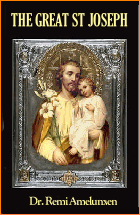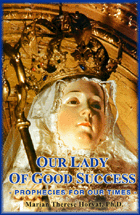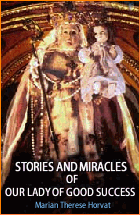Special Devotions
 |
 |
 |
 |
 |
 |
 |
A Meditation on the Scourged Christ
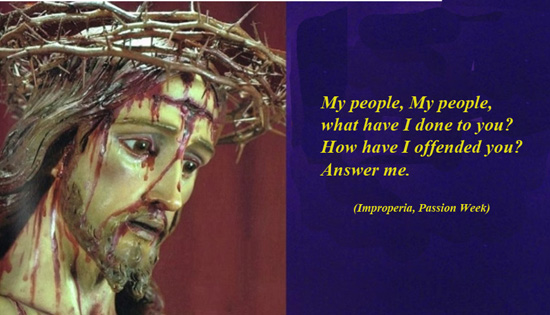
To say that this picture is beautiful is to say very little. But much more than being beautiful, it is impressive, profoundly impressive. So much so that it arouses much pity. For this reason I want to make it the subject of this meditation.
When I first saw the picture, I was shocked. Because the wounds of the Sacred Body of Our Lord Jesus Christ are presented with such realism and in such a brutal way that man's instinct for self-preservation clamors at seeing it. One has the impulse to flee from it and to think that it is not art to represent such a horror in such a horrifying way. This is, on our part, a first impulse that must be dominated because it is ingratitude.
That is, after having suffered everything that Our Lord Jesus Christ suffered for us, we do not even want to look at His wounded Body because this might upset us. This is ingratitude, an appalling lack of respect. That first impulse is understandable since it shows a suffering that is almost palpable. But there is ingratitude in consenting to that impulse.
We can understand, then, why the sculptor carved this statue in such a terribly realistic way.
In profound meditation
The first thing that catches my attention is Christ’s profoundly pensive, deeply meditative gaze.
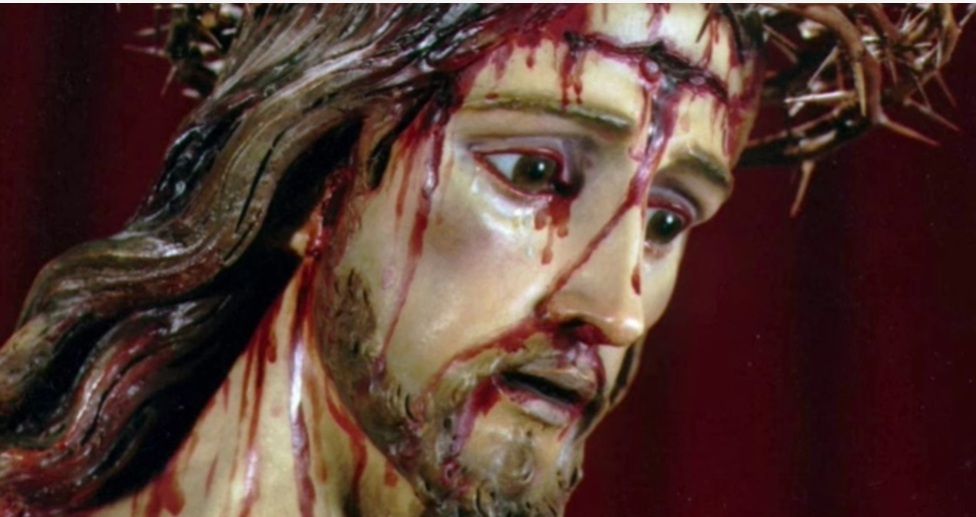
But here I interpret the gaze in another way. It is true that pain is present. It is the look of a person who is suffering profoundly. But above the pain, there is a deep reflection, a dismayed reflection, of someone thinking profoundly about what is happening to him, about its transcendent and metaphysical significance, the supernatural meaning of all the pain being endured.
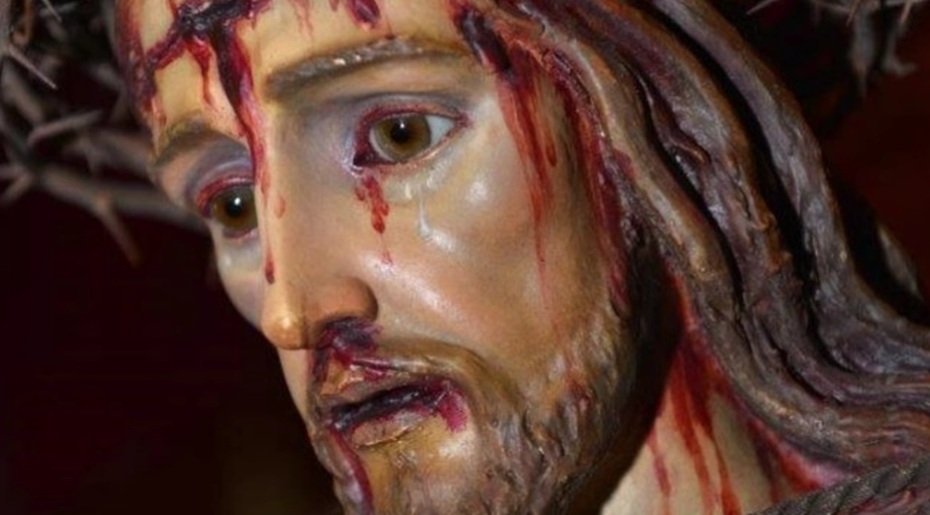
That gaze unites everything in a single global consideration about not only what they are doing against Him, but also of what will yet be done to Him. It is a consideration of how all men throughout time would consider this step of the Passion: those who would be cold, indifferent and cruet, or those who would adore Him, transported with love, admiration, veneration and consideration for the situation in which He is.
This reminds me of the words of the prophet Simeon about Him: “Behold this child is set for the fall and for the resurrection of many in Israel, and for a sign which shall be contradicted.” That is, this Child would divide History, splitting it from top to bottom, into two groups: those who were for Him and those who were against Him, some who would be saved and others lost. It seems to me that all of these considerations, and others even higher, are expressed in this gaze, which as you can see, rests in the distance on an undefined point.

Note also the beautiful position of the two arms. One could say that He is a great personage making an act of high protocol. Even in the courts, this is often the correct way to place one’s arms before a king or queen. This is how He is. And this is how I see Him with His body mangled by the flagellation, where even parts of the flesh have been torn off.
We know from History that He is surrounded by people who are mocking and laughing at Him. But He does not look at these people. He is infinitely above all of this, given over to His thoughts, to His prayer. And so much so that one could title this work: “Jesu autem orabat” [But Jesus prayed]; or “Jesus autem tacebat” (But Jesus kept silent).
Finally, notice the mantle of mockery: despite everything, it falls in a composed way, with the right side half turned back, indicating by these discreet signs the moral beauty and strength that did not abandon Him even in the most terrible situations.
I believe that this is the ultimate expression of the touching picture: Christ, thinking, reflecting, praying during His Passion.
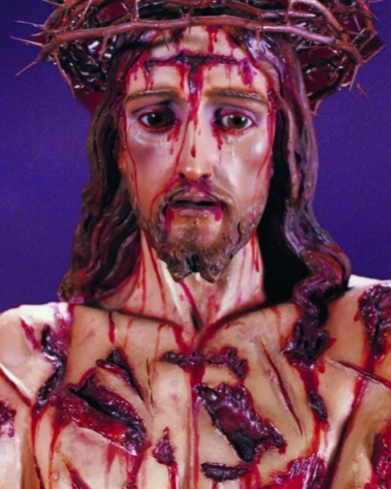
There is, then, an anguish – but what a sweet anguish, what a gentle anguish, what a confident anguish – an anguish without agitation. "This has an end, My Father will hear My prayer, and I will reach the end." This has a meaning.
On the other hand, you can see the profound sadness, but it is a moral sadness, as if He is divinely disappointed in those who have abandoned Him. Does it not seem to you that He is remembering at this moment not the miserable wretches who are whipping Him, but the Apostles who have left Him? That He is thinking of each Apostle one by one, of St. Peter upon whom He built the Church; of St. John, the virgin Apostle who hours before had laid his head on His chest to ask an intimate question, of St. Bartholomew, whom He called a true Israelite in whom there is no guile and yet who had also abandoned Him. He is thinking of all the others; He is thinking with horror of the son of perdition who sold Him. He is thinking of all those who would betray Him throughout the centuries.
He is also thinking about something that causes Him great anguish, which is magnificent, and that is Our Lady and the pain that she is suffering.
But, more than all this, it seems to me that I see the eyes of the thinker who is meditating, who is thinking, who is making a philosophy and theology of that central event of History, which is His Passion and Death. And that with all this, He is praying. In my view it is manifest that there is a prayer here, a magnificent prayer.
It seems to me that in this photograph the impression of physical pain is somewhat less, while that of anguish and reflection is greater.
All of this come together in a single physiognomy, in which the deep lash on His forehead stands out. When a person thinks, a wrinkle of this kind often forms on his forehead. Here it is the meditation of the true Man-God, a mediation accompanied by pain, by deep thought, as well as by sadness and bitterness. A meditation that makes the soul bleed, but also that elevates and sanctifies.

It is evident that this image, for those like us who are slaves of Our Lady, must be seen from the eyes of St. Louis Grignion de Montfort. That is, we must understand that if Our Lord suffered all this, it was because of Mary’s prayers for the Redemption to be completed; that if this Blood is applicable to us, it is because of Mary’s prayers; that if our presence does not cause horror to Him but on the contrary is accepted with mercy, it is because of Mary’s prayers.
And that it is with her, through her and in her that we can present ourselves to Our Lord Jesus Christ. That she is the necessary road, by the will of God, for us to approach Our Lord Jesus Christ, and to be not worthy but at least in some way proportionate to us, to be able to look at His statue and pray for ourselves and for the Church.
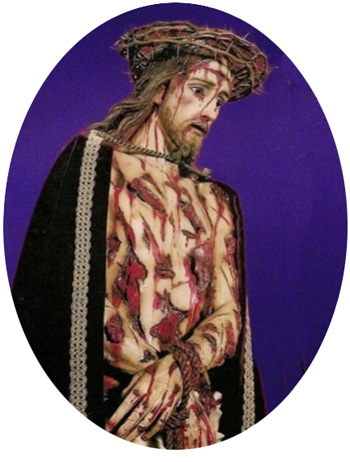

February of 1976 — Saint of the Day
Posted Arpil 9, 2025
Posted Arpil 9, 2025
______________________
______________________





